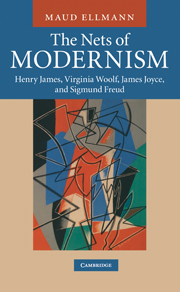Book contents
- Frontmatter
- Contents
- Acknowledgements
- List of abbreviations
- 1 Introduction: what hole?
- 2 The modernist rat
- 3 Strandentwining cables: Henry James's The Ambassadors
- 4 The Woolf woman
- 5 The darkened blind: Joyce, Gide, Larsen, and the modernist short story
- 6 The name and the scar: identity in The Odyssey and A Portrait of the Artist as a Young Man
- 7 Skinscapes in Ulysses
- Afterword
- Notes
- Bibliography
- Index
5 - The darkened blind: Joyce, Gide, Larsen, and the modernist short story
Published online by Cambridge University Press: 10 January 2011
- Frontmatter
- Contents
- Acknowledgements
- List of abbreviations
- 1 Introduction: what hole?
- 2 The modernist rat
- 3 Strandentwining cables: Henry James's The Ambassadors
- 4 The Woolf woman
- 5 The darkened blind: Joyce, Gide, Larsen, and the modernist short story
- 6 The name and the scar: identity in The Odyssey and A Portrait of the Artist as a Young Man
- 7 Skinscapes in Ulysses
- Afterword
- Notes
- Bibliography
- Index
Summary
Night after night I had passed the house (it was vacation time) and studied the lighted square of window: and night after night I had found it lighted in the same way, faintly and evenly. If he was dead, I thought, I would see the reflection of candles on the darkened blind for I knew that two candles must be set at the head of a corpse.
(D 9)In this famous passage from “The Sisters,” the first story in Joyce's Dubliners, the child-narrator gazes upward to the window to figure out if Father Flynn, the paralytic priest, is dead. But instead of seeing through this window, the child's gaze is obstructed by the “darkened blind.” This blind transforms the window into a surface to be read, as opposed to a transparent portal to the death-chamber. That the boy is searching for a sign of death, rather than the living presence of the syphilitic priest, implicates the blind in the ascendancy of signs, and the sign in the downfall of father-figures.
In Chapter 3 I argued that a central blindness organizes Strether's visual field, both obstructing and enhancing his perception of Chad's love affair: obstructing, in the sense that Strether's idealization of the romance conceals its carnal element; enhancing, in the sense that Strether alone appreciates the moral benefits of the liaison.
- Type
- Chapter
- Information
- The Nets of ModernismHenry James, Virginia Woolf, James Joyce, and Sigmund Freud, pp. 93 - 128Publisher: Cambridge University PressPrint publication year: 2010



